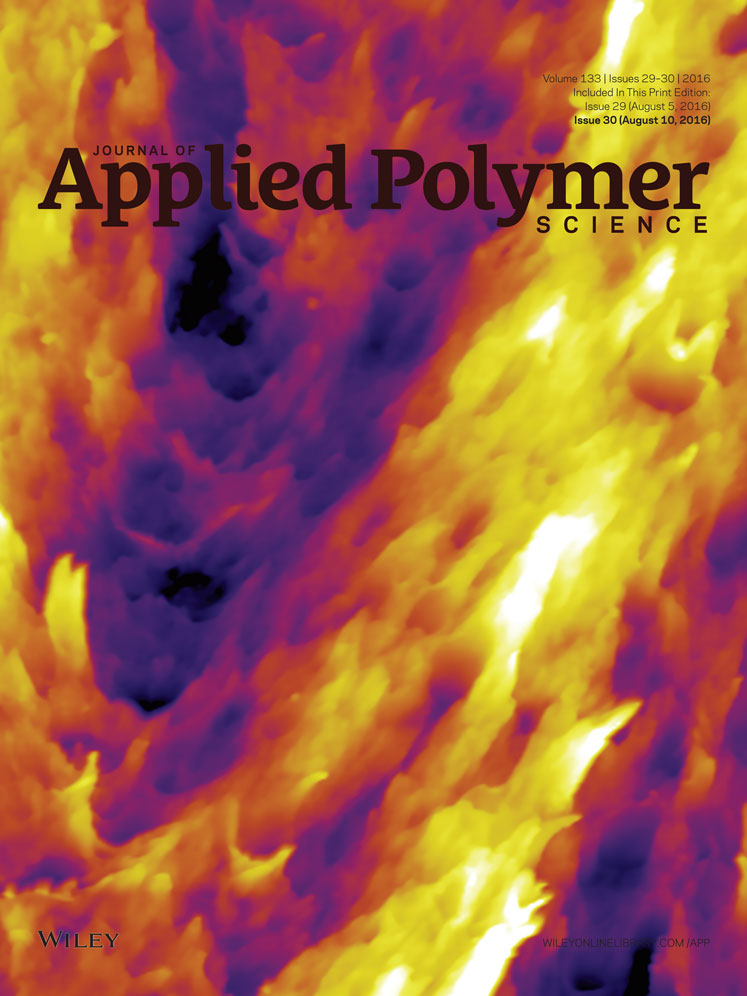A polypropylene/high density polyethylene blend compatibilized with an ethylene-propylene-diene monomer block copolymer: Fitting dynamic rheological data by emulsion models with a physical scheme
ABSTRACT
The dynamic rheological behaviors at 210, 230, and 250 °C are measured by small amplitude oscillatory shear on a rotational rheometer for a polypropylene(PP)/ ethylene-propylene-diene monomer(EPDM) block copolymer/ high density polyethylene (HDPE)/blend. The scanning electron microscope (SEM) photomicrographs show the blend has a droplet/matrix, semi-co-continuous, co-continuous morphology respectively at different weight ratios. The Cole–Cole (G″ vs. G′) data of the blends can be fitted by the simplified Palierne's model only for very narrow weight ratios. A physical scheme is proposed that the dispersed droplets are enclosed by EPDM, thus an equivalent dispersed phase is made up of “expanded” EPDM. With this physical scheme the G″ vs. G′ data of the HDPE-rich blends at 210 °C can be fitted well by Palierne's model. Also with the physical scheme the G″ vs. G′ data of the PP-rich blends at three temperatures can be fitted well by G–M's model with G* of interface equals to zero. This means the proposed physical scheme is reasonable. © 2016 Wiley Periodicals, Inc. J. Appl. Polym. Sci. 2016, 133, 43709.




